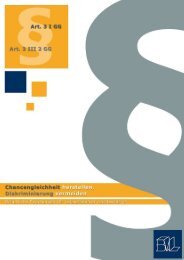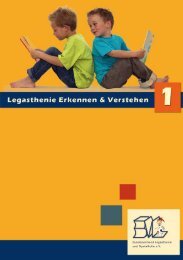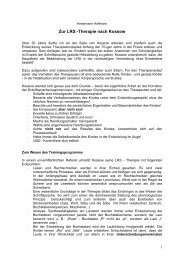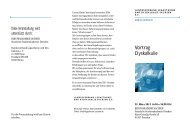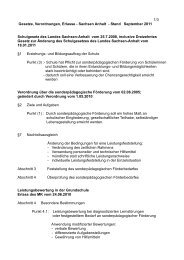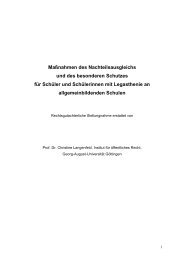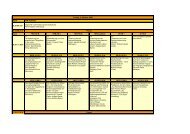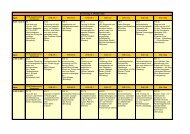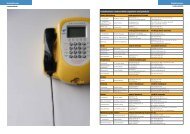Testverfah - Bundesverband Legasthenie und Dyskalkulie eV
Testverfah - Bundesverband Legasthenie und Dyskalkulie eV
Testverfah - Bundesverband Legasthenie und Dyskalkulie eV
Erfolgreiche ePaper selbst erstellen
Machen Sie aus Ihren PDF Publikationen ein blätterbares Flipbook mit unserer einzigartigen Google optimierten e-Paper Software.
15. Kongress des <strong>B<strong>und</strong>esverband</strong>es <strong>Legasthenie</strong> Abstractband<br />
markers within the VMP/DCDC2/KAAG1 locus. Detailed refinement of the LD region,<br />
involving sequencing and genotyping of additional markers, showed significant<br />
association within DCDC2 in single marker- and haplotype-analyses. The association<br />
appeared to be strongest in severely affected patients. In a second step, the<br />
study was extended to include an independent sample of 239 triads with dyslexia,<br />
in which the association – in particular to the severe phenotype of dyslexia – was<br />
confirmed. Our expression data showed that DCDC2, which contains a doublecortin<br />
homology domain that is possibly involved in cortical neuron migration, is expressed<br />
in the fetal and adult CNS, which – together with the hypothesized protein function<br />
– is in accordance with findings in dyslexia patients with abnormal neuronal migration<br />
and maturation.<br />
Korrespondenzautor:<br />
Markus M. Nöthen<br />
markus.noethen@uni-bonn.de<br />
++49 0228 6885404<br />
++49 0228 6885401<br />
Dyslexia susceptibility genes on chromosome 6<br />
*Silvia Paracchini<br />
University of Oxford, Wellcome Trust Centre for Human Genetics, Oxford, Großbritannien<br />
Dyslexia is one of the most prevalent childhood cognitive disorders and is caused<br />
in large part by genetic factors. Linkage studies have identified several regions that<br />
may contain quantitative trait loci (QTL) for this disorder. The most consistently replicated<br />
linkage is on 6p21.3-23, which has been fo<strong>und</strong> in five independent samples,<br />
including our own. By using association analysis we have recently identified a haplotype<br />
on chromosome 6p22 which is associated to dyslexia in two large set of families<br />
(Francks et al., 2004). The haplotype spans a 77 kb region of strong inter-marker<br />
linkage disequilibrium, encompassing the first four exons of KIAA0319, the entire<br />
TTRAP gene and the first exon of THEM2. Mutation screening by DHPLC of all<br />
exons and predicted promoters did not detect obvious functional variants that would<br />
disrupt any of the three genes. The risk haplotype might influence gene transcription<br />
regulation. To test this hypothesis we used the MassARRAY (Sequenom) platform<br />
to determine quantitatively relative differences in allele-specific transcription. We<br />
carried out quantitative analysis in cell lines heterozygous for the risk haplotype<br />
using markers either within the transcript sequences or in proximity of the promoters.<br />
In the second case we took advantage of the recently developed haploChip assay<br />
(Knight et al., 2003). Our data shows that the risk haplotype is association with a<br />
reduction of about 40% of the expression of the KIAA0319 gene. Functional studies<br />
are now <strong>und</strong>erway to <strong>und</strong>erstand the biological role of this gene.<br />
Korrespondenzautor:<br />
Silvia Paracchini<br />
silviap@well.ox.ac.uk<br />
++44 1865 287501<br />
73



